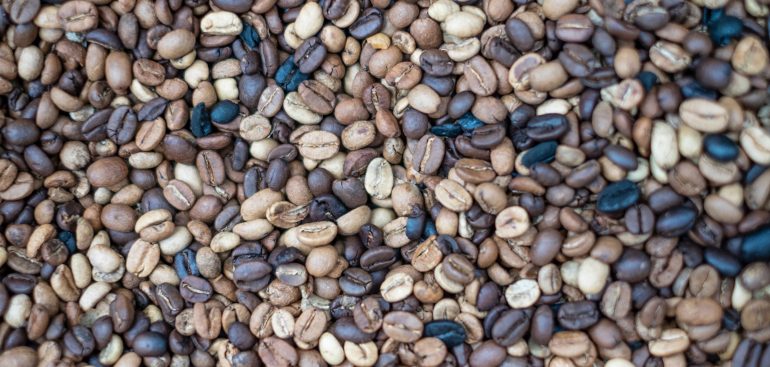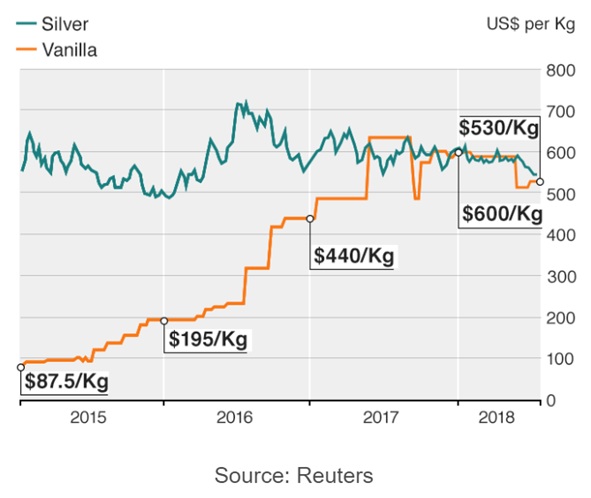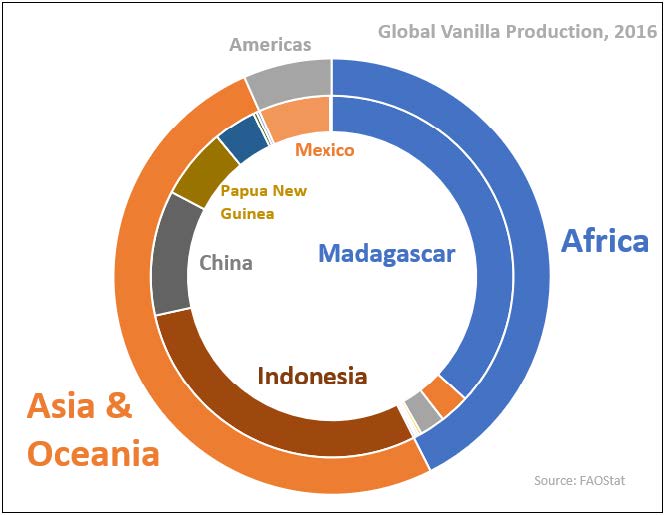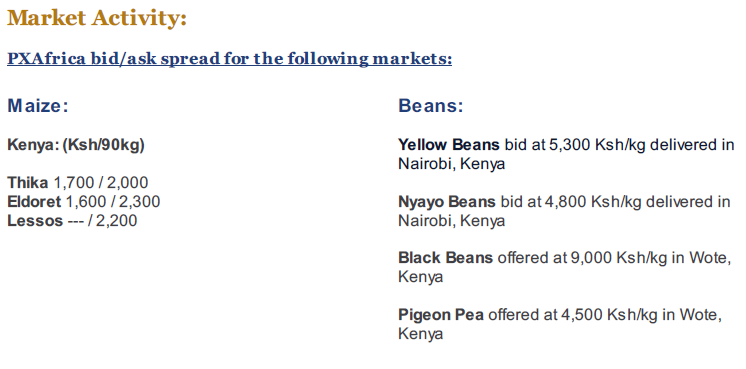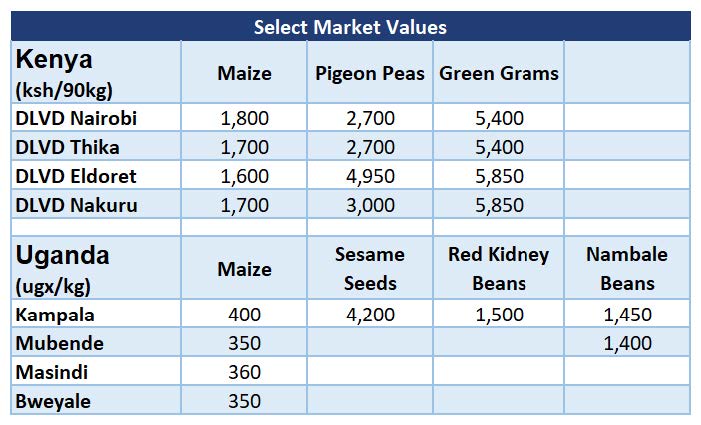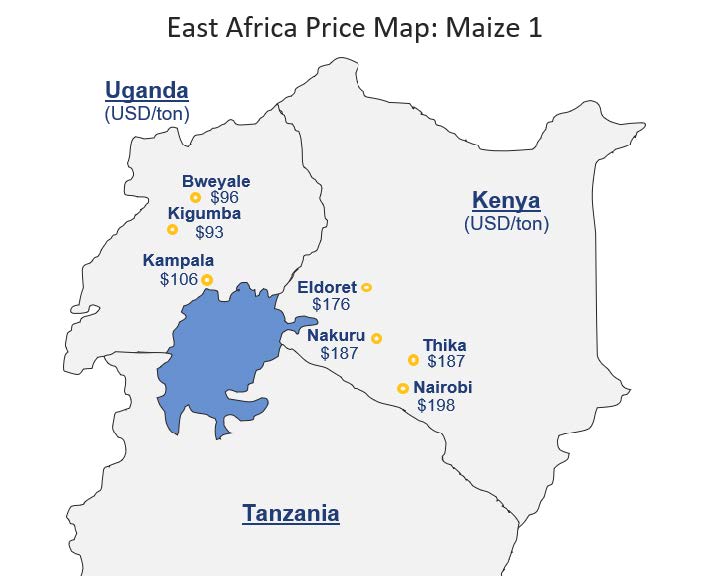Africa News
Market Update 08-29-18
Kenya:
Maize prices have dropped significantly as harvests around North Rift continue. Some areas are seeing as low as 1350 ksh/90kg, with prices of 1600 and 1800 in Eldoret and Nairobi respectively. Farmers are of course calling for the government to buy their maize as farm gate prices are low, but with bumper harvests around the region, hopes for a price rally seem rather slim. The idea of relying on a government purchasing with close to a year backlog and rife with corruption is a disheartening endeavor.
Maize imports from Uganda to Kenya have decreased dramatically over the last few weeks. During the months of June and July, imports were approaching 500 tonnes a day, while average imports for the month of August have averaged 4.5 tons a day. From officials reported June to mid-August, a total of 21,697 tonnes of maize have been imported from Uganda to Kenya, while 6,562 tonnes have moved from Uganda to Rwanda.
Imports from Uganda, and the current bumper harvest in Kenya have driven maize flour prices to a 6year low, as 2 kilogram packets of flour are retailing for Ksh86 per 2 kilogram packet in some areas, currently selling below the subsidized price from last year of Ksh90 per 2 kilogram packet. Overall, maize production in Kenya has risen from 37 million 90-kilogram bags, to a projected 40.9 million 90kilogram bags this year.
Uganda:
Maize has continued to trade at UGX 400 in the Greater Kampala area, while some of the larger buyers are waiting to see the effects of the government intervention aimed to combat low prices. Uganda is still experiencing a high volume of maize in the market as Kenyan cross boarder traders and some smaller traders from Rwanda are entering the market.
Demand for nambale beans has increased as government institutions and schools are purchasing for the upcoming term. Nambale beans are trading at UGX 1,450 per kilogram in Kampala, and UGX 1,400 in Mubende.
Soybeans are trading at UGX 1,500 per kilogram in the Greater Kampala area.
International:
As many global ag markets struggle as bumper crops hit the markets, traders found a new shining star in the global route. The price of natural vanilla traded above silver at times over the past year after a tropical cyclone slammed the island of Madagascar in March 2017, destroying a large amount of the crop in two major producing regions, with new flowers taking three to five years to start producing vanilla beans.
The boom in prices and high market share in Madagascar (see production figures below) has created a class of “vanillionaires” on the island (sadly, we cannot claim creation of this word). These vanillionaires are mostly traders and middlemen who aggregate production from smallholder farmers and sell in export markets.
Numerous initiatives started over the years aiming to give smallholder farmers in the supply chain more of the revenue from international sales, but disintermediating the traders and brokers in the middle of transactions is a tough endeavor.

